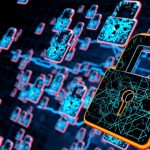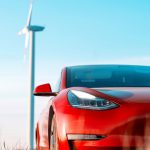The Journal of Field Robotics recently published an article titled “Convolutional neural networks to classify human stress that occurs during in-field sugarcane harvesting: A case study,” which explores innovative methods to evaluate stress in agriculture. Traditional ergonomic methods of assessing human stress are time-consuming and require extensive instrumentation and laboratory setups. In contrast, the study introduces a novel approach using artificial intelligence (AI) and deep learning (DL) models to classify stress based on facial features during labor-intensive sugarcane harvesting. The study represents a shift from conventional measurements to technology-driven solutions, offering promising implications for agricultural labor management.
Deep Learning Models and Methodology
The investigation involved collecting data from 20 subjects (10 male and 10 female) during sugarcane harvesting seasons. A total of 4300 augmented RGB images were captured, and the images were divided into training (80%) and validation (20%) datasets. The study employed four convolutional neural network (CNN) based DL models—DarkNet53, InceptionV3, MobileNetV2, and ResNet50—due to their effective feature extraction capabilities and ease of implementation on edge devices. Human stress was classified using four physiological parameters: heart rate (ΔHR), oxygen consumption rate (OCR), energy expenditure rate (EER), and acceptable workload (AWL).
The performance of the DL models was evaluated, and training accuracies ranged from 73.8% to 99.1% across different mini-batch sizes and epochs. DarkNet53 outperformed the other models, showing maximum training accuracy of 99.1% with a mini-batch size of 16 and 25 epochs. Post-training, DarkNet53 was further tested on an independent dataset of 100 images, achieving classification confidence levels between 89.8% and 93.3% for female subjects and 92.2% to 94.5% for male subjects.
Comparative Analysis and Insights
The comparative analysis of the DL models and traditional ergonomic measurements showed a net accuracy of 88%, with minor instances of misclassification. This indicates that AI-driven models can effectively identify stress in agricultural settings, albeit with some limitations. The integration of AI offers an advanced methodology for stress assessment, potentially reducing the need for extensive instrumentation and laboratory setups.
Initial studies focused on physiological and psychological indicators, such as heart rate and subjective feedback, required significant manual monitoring and instrumentation. Previous methods, while thorough, lacked the efficiency and scalability afforded by AI and DL models. The novel approach of using facial features for stress recognition presents a streamlined alternative that could lead to more efficient and widespread stress monitoring in the agricultural sector.
AI and DL technologies excel in real-world applications like face recognition; however, their application in agriculture, particularly for stress assessment, is relatively new. The current study broadens the scope of AI in ergonomics, presenting a comparative advantage over traditional methods. This intersection of technology and agriculture could pave the way for more innovative solutions, enhancing worker well-being and productivity.
Advancements in DL models, such as the ones tested in this study, highlight the potential for significant improvements in monitoring human stress in various environments. For agricultural operations, this means precise and efficient stress assessment, contributing to better labor management and health outcomes for workers. Future research could explore further refinement of these models, potentially integrating additional physiological and psychological parameters to enhance accuracy and reliability.










